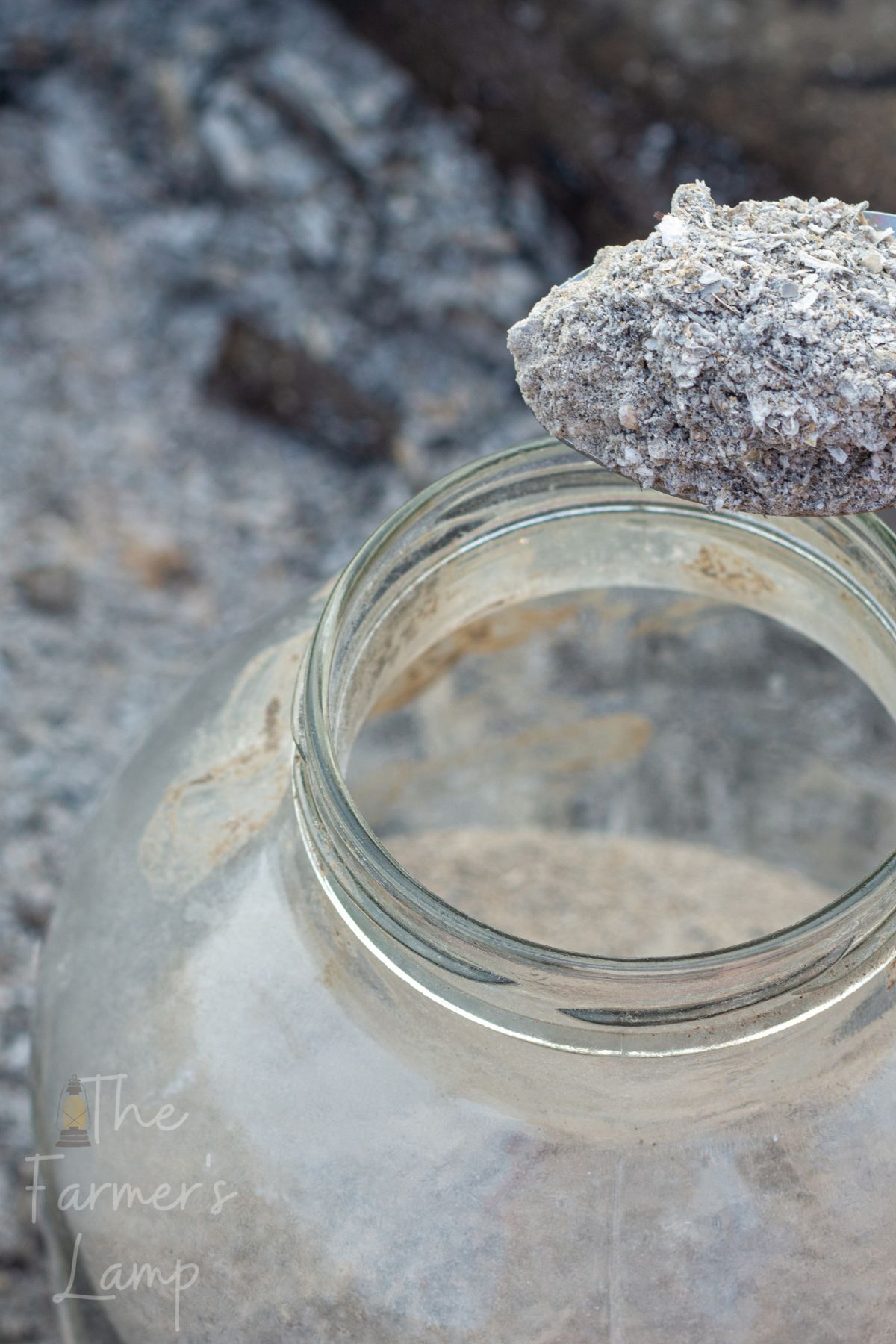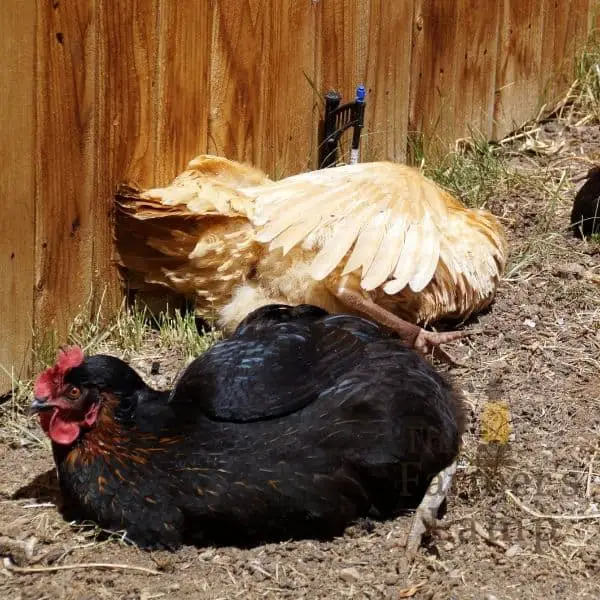Is wood ash just waste or a valuable free resource? Learn the many ways to use wood ash and reap the rewards for your land and home.

Wood ash is the byproduct of burning wood to heat, cook, and burning limbs from a cleanup or any such chore. It’s a free and valuable commodity. One cord of wood can provide you with as much as 20 lbs of wood ash to be used around the home.
Cleaning up the ashes is not a chore but an opportunity to grow better produce in the garden, keep the pond clean, and a host of other things the old-timers knew would make their lives better.
History of Wood Ash
The name potash comes from the English words pot and ash. Due to the substitution in fertilizers of cheaper potassium salts such as potassium chloride, potassium oxide, and potassium hydroxide (called caustic potash), it can be confusing to really know what you are buying.
Potassium derives its English name from potash. The old-timers knew the benefit of potash contained in wood ash. It was often refined from the ashes of broadleaf trees.
Soil Benefits of Wood Ash
- High in potassium (5%)
- Alkaline with a pH 10
- Water-soluble
- Calcium (25%)
- Magnesium (1%)
- Phosphorous (2%)
- Amends acidic soil
Top Ways Old-Timers Used Wood Ash
1. In The Garden
If you have acidic soil, wood ash can be the best solution to raise the pH to optimal levels in your garden or lawn.
Of course, to know if your soil needs supplementing, you need to first test your soil for nutrient levels. We cover the fastest way to check your soil health in another article if you would like to learn more.
According to Oregon State University, wood ash has 13 essential nutrients your garden and lawn soil must have to support healthy growth. Since wood ash comes from trees, it makes sense that it already contains almost all of the nutrients needed to produce healthy plants.
What does wood ash really provide your soil?
If your soil pH shows acidity (below 7 pH), wood ash will easily help you return levels to alkaline. This is accomplished because wood ash acts as a natural liming agent. Read on to find out all the soil amendment qualities wood ash can provide.
The old-timers used wood ash to provide their soil with readily usable potassium, calcium, and magnesium which are critical to producing the most nutrient-dense, disease-resistant crops.
Many home gardeners use wood ash as a soil amendment. Wood ash contains significant amounts of potassium and calcium, while even providing amounts of phosphorous and magnesium and micronutrients like zinc and copper.
However, it is very important to know where and when to use wood ash on lawns and gardens.
To know if you need to amend your soil with wood ash follow these simple guidelines:
Check Your Soil Health
Test your soil health to find out what it needs.
Identify the plants you are going to be planting in the soil.
Some plants need a lower pH or a more acidic soil to grow well while others prefer a more alkaline soil. Most plants prefer a neutral pH between 6-7.
If your soil pH level is in line with the plants you intend to grow there, no amendment is needed.
Easy Ways to Test Your Own Soil
- The Squeeze test: Grab a handful of moist soil and squeeze it. If it crumbles, you have great soil composition. If it stays firm, you have more of a clay soil that can trap nutrients making them unavailable for plant roots. If it falls apart, you have sandy soil.
- The Drainage test: Dig a hole 6 inches wide and 1 foot deep. Fill the hole with water and let it drain. Fill it again and time how long it takes to drain. Anything over 4 hours shows poor drainage which can produce problems such as root rot and lack of access to nutrients.
- The Worm test: Be sure the soil is moist and at least 60 degrees. Dig a hole 1 foot deep and 1 foot wide. Sift dirt over a surface you can easily clean off. Count the number of worms in the dirt and return the worms and dirt to the hole. If you count 10 or more worms, you have good organic matter.
- pH Test kit: Purchase an inexpensive pH test kit. They are a fast and easy way to determine if your soil would benefit from adding wood ash as an amendment.
- Contact your local cooperative extension service. They will help you send your soil for testing. The tests will reveal what your soil is missing.
When to Add Wood Ash
Add wood ash if your soil pH is too low (below 6.5). Also, if your magnesium and calcium are too low. The dreaded tomato blossom end rot is often caused by a lack of calcium.
When NOT to Add Wood Ash
Do not add wood ash if your soil is already alkaline with a pH greater than 7.0. In a soil that is already alkaline, you will hurt your plants and may even kill them.
Many plants can not take up nutrients if the soil pH gets too high. Trees will have yellow leaves (chlorosis); some vegetables and fruit trees will also suffer.
You can use elemental sulfur to lower soil pH if you accidentally get it too alkaline.
Don’t apply ashes around acid-loving plants such as blueberries, rhododendrons, azaleas, and holly’s. Wood ash will raise the pH to a level those plants cannot thrive in.
If your soil is already in the optimal range (6.0 to 7.0), you do not want to mess with the pH.

2. In Composting
Are Ashes Good For Compost?
If you have more wood ash than you know what to do with, then the compost pile is the best place to reap its benefits.
Ashes are great for your compost pile. It helps maintain a neutral balance among the decomposing food that tends to be acidic.
I would not recommend adding wood ash to your vermicomposting. But if you have a compost pile just empty the ash on top. Every month or so use a small tractor with a front end loader or a shovel and move the pile around.
Our compost pile is built with old pallets. We left the front open just for this purpose.
3. To Make Soap
The basic recipe for soap was recorded in the Bible as the biproduct of the temple sacrifices. But it was a pagan priest in Rome who, while cleaning up from sacrifices on the altar, got the idea that he could mix these ingredients and package them for public use.
It was Rome that really spread this form of soap around the world and made it very popular for everyday use.
The old-timers made their own lye soap with the simple ingredients they had on hand, wood ash being the base.
4. To Control Pond Algae
To use wood ash for pond algae, add 1Tbs of wood ash per 1,000 gallons of water in your pond. This equation adds enough potassium to help aquatic plants that keep pond algae from marring your pond to thrive.

5. In Your Chickens’ Dust Bath
Chickens need their daily dust baths to remain healthy and parasite free!
Many a morning, I have taken the pail of wood ashes from the fireplace to the poultry yard. I sprinkle it around the coop where the girls like to kick up some dirt for their morning dust bath routine!
The dust helps them repel mites and lice much like diatomaceous earth does. Making sure they have a dust bath available helps to keep your flock parasite free throughout the year.
Wood ash has a long history of use. For thousands of years our ancestors used wood ash to make lye for soaps, to clean glass, and to grow beautiful blooms on plants.
The old-timers used wood to heat and cook. My grandpa used to say it heated you twice once when you cut and split your firewood and then when you burn it in the wood stove.
Since man started to use fire as a way to cook, heat, and survive, he has had a pile of ashes after the smoke cleared and the fire went out. That we should learning the many ways to use wood ash seems sensible. Especially in a time where nothing was wasted.
Wood Ash as a Liming Agent
As we’ve already seen, soil pH is a measure of the soil’s relative acidity or alkalinity. Most crops grow best in a close to neutral soil with a pH between 6.0-6.8.
Acidic soils (pH of 6.0 or lower) reduce the availability of most plant nutrients and can reduce biological activity in the soil.
Lime takes 6 months to a year to fully produce results. Wood ash is more soluble and reactive than ground limestone and brings about a change in soil pH more rapidly than lime.
Because of the nature of wood ash, it’s not as concentrated in CCE (Calcium Carbonate Equivalent) as lime. This means you must use more wood ash to achieve the same impact on soil pH as lime.
The CCE of lime is 90-95%, wood ash is 25-59% CCE. You need to use 2-4 times as much wood ash as you would limestone in order to see the same reaction.
The amount of wood ash needed for the soil should be determined by first testing the soil. The current pH of the soil, the target pH, and the type of soil will determine the right amount to add.
Some plants, like blueberries, rhododendrons, and scab-susceptible potato varieties thrive in acid soils, and should not be enhanced with wood ash. The exception would be if a very low pH is present in the soil tested around them.
A pH level of over 9 can keep plants from being able to perform basic nutrient uptake.

How to Apply Wood Ash
Soil research is crucial to determine the relative needs of your plants. The soil pH level is one you should keep track of in your gardening journal.
For a 1,000-square-foot garden with a soil pH of 6.5, you would need around 20 lbs of wood ash. Scatter evenly over the top of your soil then thoroughly water to soak the ash into the soil.
Another method of applying wood ash is to simply mix it into the top 4″ of soil. Do not go deeper than 4″ to avoid damaging the micro life in your soil and to make it readily available to plant roots..
A maintenance application can be applied every fall to late winter. Add 10 – 20 lbs to the same area. Use either method.
Although applications in the fall/winter are recommended, you can also apply the material in the spring.
Do Not put the ashes on top of or next to germinating seeds. Too much salt can affect germination.
Dust particles can be a problem when spreading large amounts of a material like fine wood ash or diatomaceous earth. A mask can be helpful and if necessary, water can be added. Getting the ash too wet can make it stick together and harder to handle.
Safety with Wood Ash
Wood ash is caustic! You should use protective equipment during application. Helpful equipment includes eye protection, gloves, long sleeves, and a mask.
Make sure to only use wood ash produced from trees grown in natural soils. I would not recommend using wood ash produced from trees grown near industrial sites or in soils that may be contaminated with toxins or heavy metals. Also, I would not recommend using ash produced from burning chemically treated wood and wood treated with waste oil or plastics.
USE COMMON SENSE
Do not mix ash with nitrogen fertilizers like ammonium sulfate (21-0-0-24S), urea (46-0-0) and ammonium nitrate (34-0-0). These fertilizers may produce ammonia gas when placed in contact with wood ash.
As you can see, there are many uses for wood ash. It is a free resource available to you so take advantage. Just remember to use common sense and the practical guidelines in this article.
As always, we’re here to help.

Leave a Reply